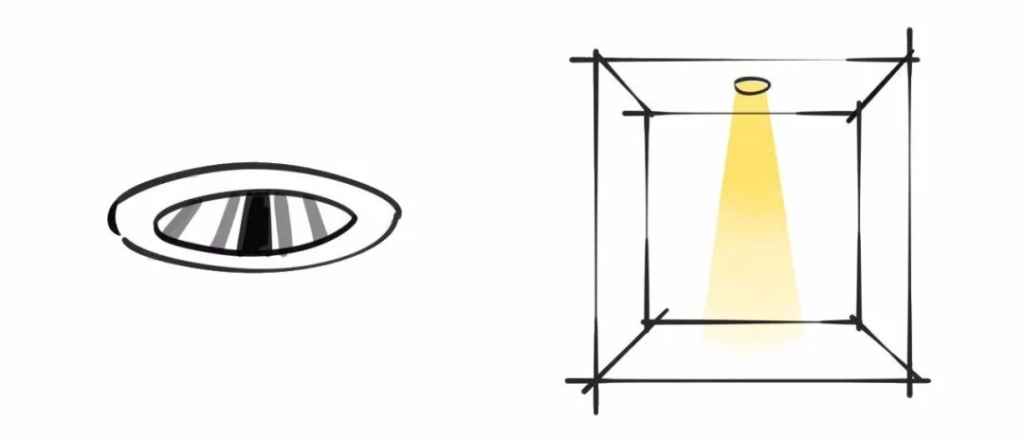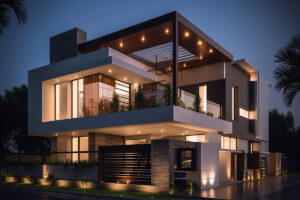Have you ever found yourself squinting or feeling uncomfortable when trying to focus on a bright light? If so, you’re certainly not alone in this experience. Many individuals encounter glare from lighting fixtures, which can be a significant source of distraction and discomfort in both residential and commercial environments. This issue not only affects visual comfort but can also lead to eye strain and reduced productivity, particularly in workspaces where proper lighting is essential. Fortunately, there is a solution: the anti-glare downlight.
Anti-glare downlights are specially designed lighting fixtures that aim to reduce the harshness of bright lights while enhancing the overall illumination experience. These innovative lights utilize advanced technologies and design features to diffuse light more evenly, minimizing direct glare and creating a softer, more pleasant ambiance. In this article, we’ll delve deeper into what anti-glare downlights are, exploring their unique characteristics and how they function. We will also discuss the numerous benefits they offer, such as improved visual comfort, increased energy efficiency, and the ability to create a more inviting atmosphere in any space. Furthermore, we will highlight various applications for these downlights, showcasing how they can be effectively integrated into different settings—from homes to offices and retail spaces—to elevate your lighting setup. Whether you’re looking to enhance your living room’s ambiance or create a more productive workspace, understanding the advantages of anti-glare downlights can help you make informed decisions about your lighting choices.
What is Anti-Glare Downlights?
Anti-glare downlights represent a significant advancement in lighting technology, specifically engineered to minimize glare and reduce eye strain while maintaining optimal illumination levels. Unlike traditional downlights that can produce harsh, direct light, anti-glare models employ a range of innovative design features to control and diffuse light more effectively. A key element is the strategic placement of the light source. By recessing the bulb or LED deeply within the fixture, the direct line of sight to the light source is minimized, preventing harsh glare from reaching the eyes.
Furthermore, specialized reflectors play a crucial role in shaping and directing the light output. These reflectors are carefully designed to distribute light evenly across a surface, reducing hotspots and creating a more comfortable and visually appealing environment. Baffle downlights take glare reduction a step further by incorporating internal structures, known as baffles, that absorb stray light and prevent it from reflecting outwards. This multi-faceted approach to glare control results in a softer, more diffused light that is easier on the eyes. Anti-glare downlights are available in a diverse array of styles and configurations, including both recessed models that sit flush with the ceiling and surface-mounted options for situations where recessed installation is not feasible. This versatility ensures that these lights can be seamlessly integrated into a wide range of architectural designs and interior decors, providing both functional and aesthetic benefits.
What’s glare? Why does it matter for anti-glare downlight?
Glare, that irritating, sometimes blinding light that significantly reduces visibility, is far more than a mere inconvenience. It’s a persistent visual obstacle that can cause considerable discomfort, decreased productivity, and even pose serious safety risks in various settings. Whether you’re navigating a rain-slicked road at night, struggling to focus in a brightly illuminated office, or trying to enjoy a movie on a sunny afternoon, understanding the nature of glare and learning effective strategies to minimize its impact are crucial for maintaining visual comfort, optimizing performance, and ensuring overall well-being.
Glare is fundamentally defined as a reduction in visual performance or a state of discomfort caused by a light intensity within the visual field that is significantly greater than the intensity of light to which the eyes are adapted. In simpler terms, it occurs when an excessive amount of light enters the eye, overwhelming its natural ability to process and manage it effectively. This overload leads to a scattering of light within the eye, reducing contrast and clarity, and ultimately hindering our ability to see clearly and comfortably.
The International Commission on Illumination (CIE), a globally recognized authority on light and illumination standards, provides a more formal definition of glare, describing it as “a condition of vision in which there is discomfort or a reduction in the ability to see details or objects, caused by an unsuitable distribution or range of luminance, or by extreme contrasts.” This definition highlights the key factors that contribute to glare, including the distribution of light, the range of brightness levels, and the presence of stark contrasts within the visual environment.
A Spectrum of Glare: Understanding the Different Types
Glare manifests itself in a variety of forms, each with its own unique characteristics and potential impact on vision:
- Distracting Glare: This type of glare represents an annoying level of brightness that pulls focus away from the intended task or object. It might not necessarily impair vision significantly, but it can be a source of persistent distraction and reduced concentration.
- Uncomfortable Glare: Uncomfortable glare goes beyond mere annoyance, causing physical discomfort such as squinting, eye strain, and the instinctive need to look away from the source of glare. Prolonged exposure to uncomfortable glare can lead to headaches and fatigue.
- Disabling Glare: Disabling glare is a more serious form of glare that impairs vision by scattering light within the eye, reducing contrast and clarity. This type of glare makes it difficult to discern fine details and can significantly hinder visual performance, especially in tasks that require precision and accuracy.
- Blinding Glare: Blinding glare represents the most severe form of glare, characterized by an intense burst of light that momentarily overwhelms vision, causing a temporary loss of sight. This type of glare is particularly dangerous in situations where immediate visual input is critical, such as driving or operating machinery.
- Direct Glare: Direct glare occurs when a bright light source is positioned directly within the field of view, such as an unshielded light bulb or the sun shining directly into the eyes.
- Reflected Glare: Reflected glare arises from light bouncing off reflective surfaces, such as glossy floors, polished furniture, or water surfaces. The reflected light can create bright spots and unwanted reflections that interfere with vision.
- Background Glare: Background glare refers to excessive light emitted from the background light source that affects the vision, making it difficult to focus on objects in the foreground.
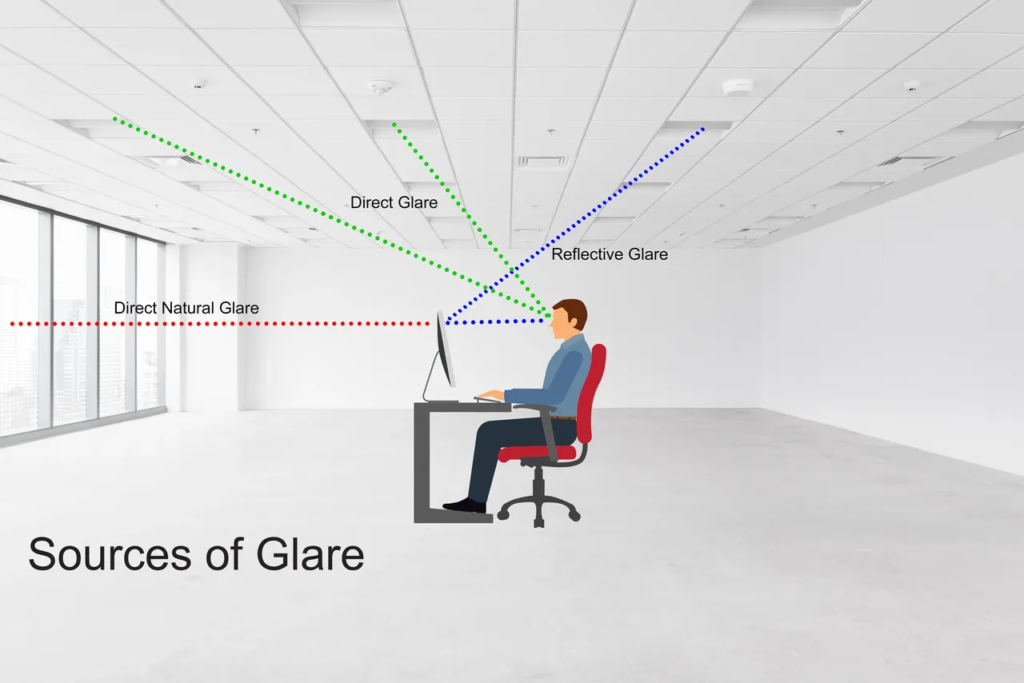
The LED Question: Do Light-Emitting Diodes Contribute More to Glare?
While LED lights are widely celebrated for their exceptional brightness and energy efficiency, a common misconception is that they inherently produce more glare than traditional lighting options like halogen bulbs or incandescent lamps. However, the reality is more nuanced. LEDs themselves do not inherently emit more glare. The key factor determining the presence and severity of glare lies in the design, quality, and application of the lighting fixture or system. Poorly designed LED fixtures with inadequate shielding or improper placement can certainly contribute to glare, but well-designed LED systems can actually minimize glare and provide more comfortable and controlled illumination.
Measuring Glare: Quantifying Visual Discomfort
Glare, being a subjective experience, can be challenging to quantify objectively. However, researchers and lighting professionals have developed various methods to measure glare and assess its potential impact on visual comfort and performance. These methods often involve brightness adjustments and category rating procedures in carefully controlled psychophysics experiments, where participants are asked to rate their level of discomfort or visual impairment in response to different lighting conditions. One commonly used metric for predicting discomfort glare in indoor environments is the Unified Glare Rating (UGR), which takes into account factors such as the size, luminance, and position of light sources in the room.
UGR=8log[0.25/Lb∗∑ i L i ]
Anti-Glare Downlights: A Modern Solution for Enhanced Visual Comfort
Anti-glare downlights represent a significant advancement in modern lighting technology, offering a sophisticated solution to minimize glare and create a more visually comfortable and productive environment. These innovative lighting fixtures are meticulously engineered to reduce the direct visibility of the light source, preventing excessive light from directly entering the eye and minimizing the scattering of light that causes glare. By controlling the distribution of light and reducing unwanted reflections, anti-glare downlights provide a more even, diffused, and comfortable illumination that enhances visual clarity and reduces eye strain.
How Anti-Glare Downlights Work: A Symphony of Light Control
Anti-glare downlights employ a variety of sophisticated techniques to achieve their glare-reducing effects:
- Recessed Positioning of the Light Source: By recessing the light source deeper within the fixture, anti-glare downlights reduce the direct visibility of the lamp and minimize the amount of light that can directly enter the eye.
- Strategic Use of Reflective or Refractive Materials: Many anti-glare downlights incorporate specially designed reflective or refractive materials that help to redirect and diffuse the light, softening its intensity and reducing harsh contrasts.
- Integration of Specialized Lenses or Diffusers: Special lenses or diffusers are often used to further scatter and soften the light output, creating a more uniform and comfortable illumination.
- Implementation of Baffles or Louvres: Baffles or louvres are internal structures strategically placed within the fixture to absorb excess light and reduce glare. Baffle downlights, in particular, feature a ribbed or stepped interior surface that is specifically designed to trap and absorb stray light, further minimizing glare and enhancing visual comfort.
By understanding the multifaceted nature of glare and embracing innovative lighting solutions like anti-glare downlights, we can create environments that prioritize visual comfort, optimize performance, and promote overall well-being in a variety of settings, from homes and offices to schools and healthcare facilities.
Advantages of Anti-Glare Downlights
Using anti-glare downlights offers several benefits:
- Reduced Eye Strain: They provide softer light that minimizes discomfort during prolonged use.
- Enhanced Energy Efficiency: LED options consume less power than traditional bulbs, saving on energy bills.
- Improved Aesthetics: Their sleek designs complement modern interiors while providing effective lighting.
- Long Lifespan: Many models last over 50,000 hours, reducing replacement frequency.
Disadvantages of Anti-Glare Downlights
Despite their advantages, there are some drawbacks to consider:
- Higher Initial Cost: They can be more expensive than standard lighting options.
- Lumens Output Limitations: Some models may not provide sufficient brightness for larger spaces.
- Installation Complexity: Professional installation might be necessary for optimal performance.
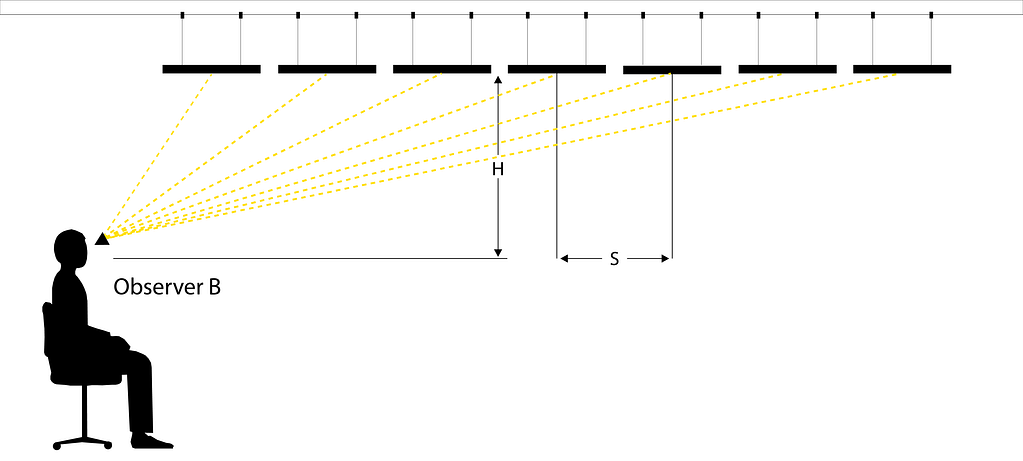
Applications of Anti Glare Downlight
Anti-glare downlights are incredibly versatile lighting fixtures, finding applications across a broad spectrum of environments due to their ability to provide comfortable and effective illumination. Their design focuses on minimizing glare, which is a common source of eye strain and discomfort, making them suitable for spaces where visual comfort is a priority:
- Residential Spaces: In homes, anti-glare downlights are perfect for creating relaxing and inviting atmospheres. Imagine a living room bathed in soft, even light, ideal for reading or entertaining. In bedrooms, they provide gentle illumination that promotes relaxation and prepares the body for sleep. Home offices benefit significantly, as the reduced glare helps to minimize eye strain during long work sessions, boosting productivity and overall well-being.
- Commercial Environments: Businesses can greatly benefit from the installation of anti-glare downlights. In offices, they create a more comfortable and productive workspace by reducing harsh reflections on computer screens and other surfaces. Conference rooms become more conducive to meetings and presentations, as participants are less likely to be distracted by uncomfortable lighting. Reception areas offer a welcoming first impression with soft, diffused light that sets a positive tone for visitors.
- Retail Settings: For retail stores, effective lighting is crucial for showcasing merchandise and attracting customers. Anti-glare downlights excel in showrooms, boutiques, and large department stores by providing focused illumination that highlights products without creating harsh shadows or distracting reflections. This helps to draw attention to key items and create a more appealing shopping experience.
- Hospitality Venues: The ambiance of hotels, restaurants, and bars is essential for creating a positive customer experience. Anti-glare downlights contribute to this atmosphere by providing pleasant and inviting illumination that enhances the décor and creates a sense of warmth and comfort. Whether it’s a cozy restaurant or a chic hotel lobby, these lights help to set the right mood.
- Healthcare Facilities: In healthcare settings, creating a soothing and calming environment is paramount. Anti-glare downlights are particularly beneficial in waiting areas, hallways, and patient rooms, where they provide gentle, diffused light that reduces stress and promotes relaxation. This can help to improve the overall patient experience and create a more comfortable environment for staff.
- Educational Institutions: Schools, colleges, and universities require lighting that supports learning and concentration. Anti-glare downlights are well-suited for classrooms, libraries, and lecture halls, where they provide even illumination that reduces eye strain and promotes focus. This can help students to stay engaged and perform better academically. Of course, Radians also have a professional series for classroom led light, click HRER to know more.
The Future of Anti-Glare Downlights
The market for anti-glare downlights is expected to grow significantly. As more people prioritize comfort and energy efficiency in lighting, manufacturers will continue to innovate. Future advancements may include smart technology integration and improved designs for enhanced user experience.
The Importance of Lighting Quality
The quality of light affects mood and productivity. Anti-glare downlights help create a pleasant atmosphere by providing soft illumination. This is especially important in workspaces where prolonged exposure to harsh lighting can lead to fatigue and discomfort.
Selecting the Right Anti-Glare Downlight
When choosing anti-glare downlights, consider the following factors:
- Lumen Output: Determine the brightness needed based on room size and purpose.
- Beam Angle: Select a beam angle that suits your lighting needs—narrower for accent lighting and wider for general illumination.
- Color Temperature: Choose a color temperature that fits the desired ambiance—warm white for cozy settings or cool white for modern spaces.
- Cri (Color Rendering Index): Look for a high CRI rating (above 80) for accurate color representation.
The Role of Installation in Performance
The installation process significantly impacts the performance of anti-glare downlights. Proper placement ensures optimal light distribution and minimizes glare. If unsure about installation, hiring a professional electrician is advisable.
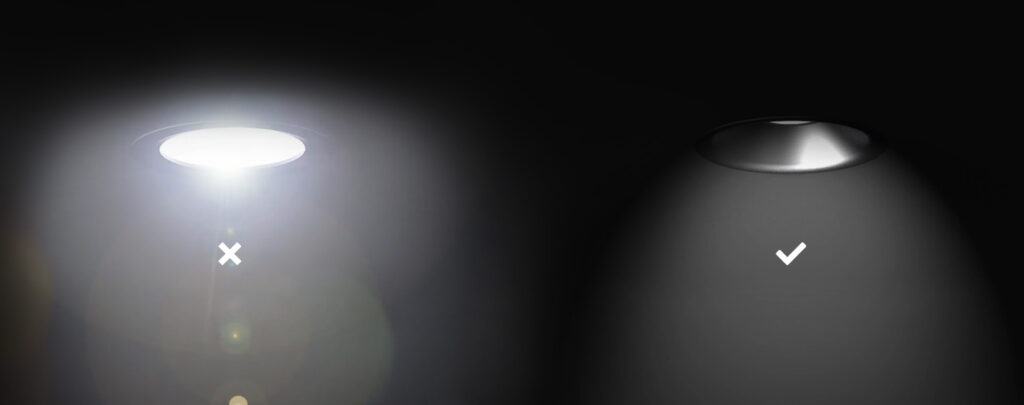
Caring for Your Anti-Glare Downlights
Caring for your downlights can extend their lifespan and maintain performance. Regularly clean the fixtures to remove dust and debris. Check connections periodically to ensure they remain secure and functional.
Troubleshooting Common Issues
- Dimming Issues: If lights flicker or dim unexpectedly, check connections or replace faulty drivers.
- Lumen Decrease: If brightness decreases over time, consider replacing aging bulbs or fixtures.
- No Light Output: Ensure power supply is active; check circuit breakers if necessary.
The Environmental Impact of Anti-Glare Downlights
The shift towards energy-efficient lighting solutions like anti-glare downlights contributes positively to environmental sustainability. Lower energy consumption reduces carbon footprints while promoting eco-friendly practices in homes and businesses.
The Economic Benefits of Energy Efficiency
Savings on energy bills can offset the initial investment in anti-glare downlights over time. Their long lifespan also means fewer replacements, leading to lower long-term costs. This makes them an economically sound choice for many consumers.
User Experiences with Anti-Glare Downlights
User feedback highlights several positive experiences with anti-glare downlights:
- User Comfort: Many report reduced eye strain compared to traditional lighting options.
- Aesthetic Appeal: Users appreciate their modern look and how they enhance home decor.
- Easier Maintenance: The longevity of LED options means less frequent maintenance needs.
Cultural Perspectives on Lighting Design
Cultural differences influence preferences in lighting design. In some cultures, soft lighting creates a relaxing atmosphere, while others may prefer bright illumination for functionality. Understanding these differences can help tailor lighting solutions effectively.
The Science Behind Light Perception
The human eye perceives light differently based on its intensity and distribution. Anti-glare downlights aim to create a balanced light environment that feels natural and comfortable. This is achieved through careful engineering of the light source and fixture design.
The Psychological Effects of Lighting
Luminous environments can influence mood and productivity levels. Soft, well-distributed light from anti-glare downlights promotes relaxation and focus, making them ideal for both residential and commercial settings.
A Comparison with Traditional Lighting Solutions
| Anti-Glare Downlights | Traditional Lighting Solutions | |
|---|---|---|
| Lumens Output | Softer light with reduced glare | Bright but often harsh illumination |
| Energy Efficiency | High efficiency (LED) | Tends to consume more power (incandescent) |
| Lifespan | 50,000+ hours (LED) | Around 1,000 hours (incandescent) |
| User Comfort | Mild light reducing eye strain | Poor comfort due to glare issues |
Radians offers a comprehensive range of anti-glare downlights, carefully engineered with varying power outputs and dimensions to seamlessly integrate into diverse settings and applications. Beyond their specialized anti-glare downlight, Radians also manufactures an extensive catalog of lighting solutions, including dimmable downlights for adjustable ambiance, waterproof downlights designed for moisture-prone environments, panel lights, track lights, and wall lights. Established in 2019, Radians has quickly evolved into a comprehensive manufacturing hub, supported by a seasoned team of experts passionate about the design, production, meticulous sales strategies, and innovative marketing.
At the heart of Radians’ philosophy lies a steadfast dedication to unique design aesthetics, uncompromising product quality, and unparalleled professional service. This commitment is reflected in their products, many of which boast CE and RoHS certifications. Radians’ overarching goal is to innovate and produce lighting that is both visually stunning and exceptionally energy-efficient.
Whether you’re a long-standing client or discovering the Radians experience for the first time, you can anticipate a remarkable encounter with their diverse product line and commitment to excellence. Prepare to be impressed by the breadth of their offerings and the distinct Radians approach to lighting solutions.
Conclusion
Anti-glare downlights represent a modern and sophisticated approach to lighting design, seamlessly blending functionality with visual comfort. By significantly reducing glare and providing comfortable, even illumination, they enhance the ambiance and usability of any environment, from private residences to bustling commercial spaces. Understanding the mechanics of how these lights function and the diverse benefits they offer empowers you to make an informed and confident decision when considering an upgrade to your existing lighting system. When planning your next lighting project, carefully consider the incorporation of anti-glare downlights to cultivate a more comfortable, visually appealing, and energy-efficient space.
FAQs:
Are anti-glare downlights a worthwhile investment?
If you’re bothered by intense lighting that causes eye strain or headaches, anti-glare downlights are a great option. They offer gentle, consistent lighting while also improving the appearance of your home.
Do anti-glare downlights help save energy?
Absolutely! They improve energy efficiency by cutting down on wasted light, which means you can use fewer lights with lower energy consumption.
Where do baffle downlights work best?
Baffle downlights are particularly useful in places that require a good mix of ambient lighting and visual comfort, like art galleries, retail spaces, and living rooms.
- Company type: High-end lighting manufacturer
- Founded: 1962
- Headquarters: Brescia, Italy
- Products: A wide range of lighting solutions including decorative lamps, architectural lighting, and bespoke solutions for residential and commercial spaces.
- Website: flos.com

